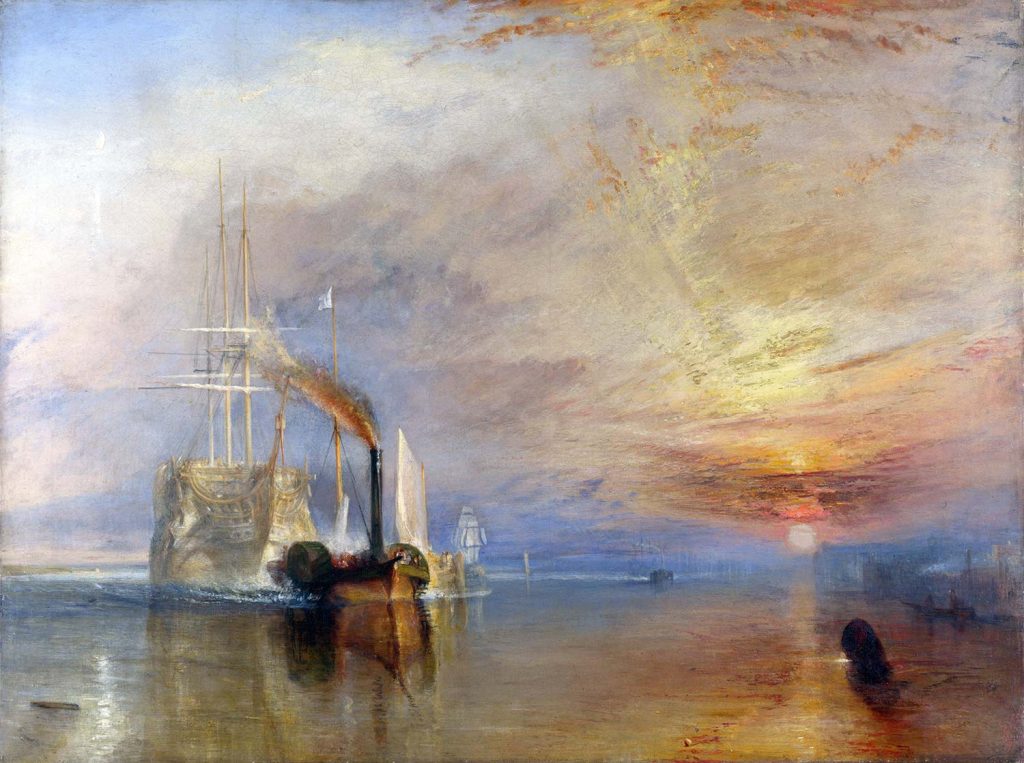
The Fighting Temeraire by Joseph Mallord William Turner was created in 1839. The painting is in National Gallery London. The size of the work is 90,7 x 121,6 cm and is made of oil on canvas.
About the Work
Turner’s painting shows the final journey of the Temeraire, as the ship is towed by a paddle-wheel steam tug from Sheerness in Kent along the river Thames to Rotherhithe in south-east London, where it was to be scrapped.
Built of the wood from over 5000 oaks, the 98-gun, three-decker veteran warship had played a distinguished role during the Napoleonic Wars, defending Nelson’s flagship Victory at the Battle of Trafalgar in 1805. With the advent of peace in 1815, most of Britain’s great warships became redundant, and from 1820 the Temeraire had been moored off Sheerness, serving mainly as a supply ship. In June 1838 the Admiralty ordered that the decaying Temeraire be sold, as the ship was by then over 40 years old and worth only the value of the timbers.
Prior to sale, Temeraire was stripped by the Navy of all re-usable parts – including masts and yards – and reduced to an empty hull. The ship was sold for £5530 to John Beatson, a Rotherhithe shipbreaker and timber merchant. As the mastless 2110-ton Temeraire was unable to sail independently, Beatson hired two steam tugs to tow it along the Thames from Sheerness to his breaker’s wharf at Rotherhithe. Moving the Temeraire took about two days, and the ship finally berthed at Beatson’s wharf on 6 September.
It is unlikely that Turner witnessed the Temeraire being towed – he may not even have been in England at the time – although he could have previously seen the ship when travelling past Sheerness. Instead, he imaginatively recreated the scene using contemporary reports. News of the ship’s fate would have aroused his patriotism. Read more in National Gallery London…
Order a reproduction of this work (printed on canvas)
